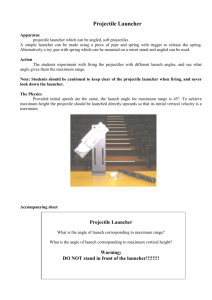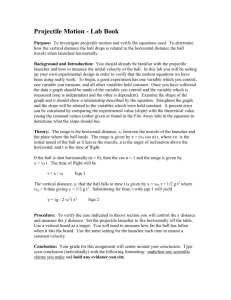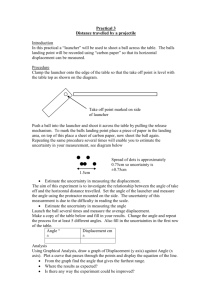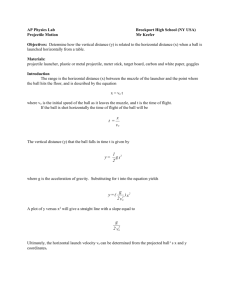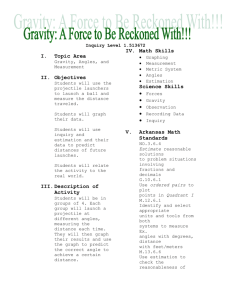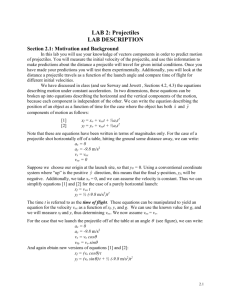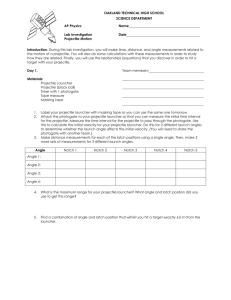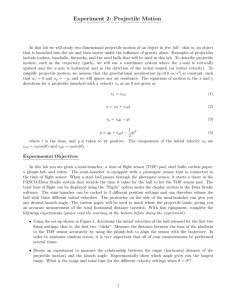Addition of Vectors
advertisement
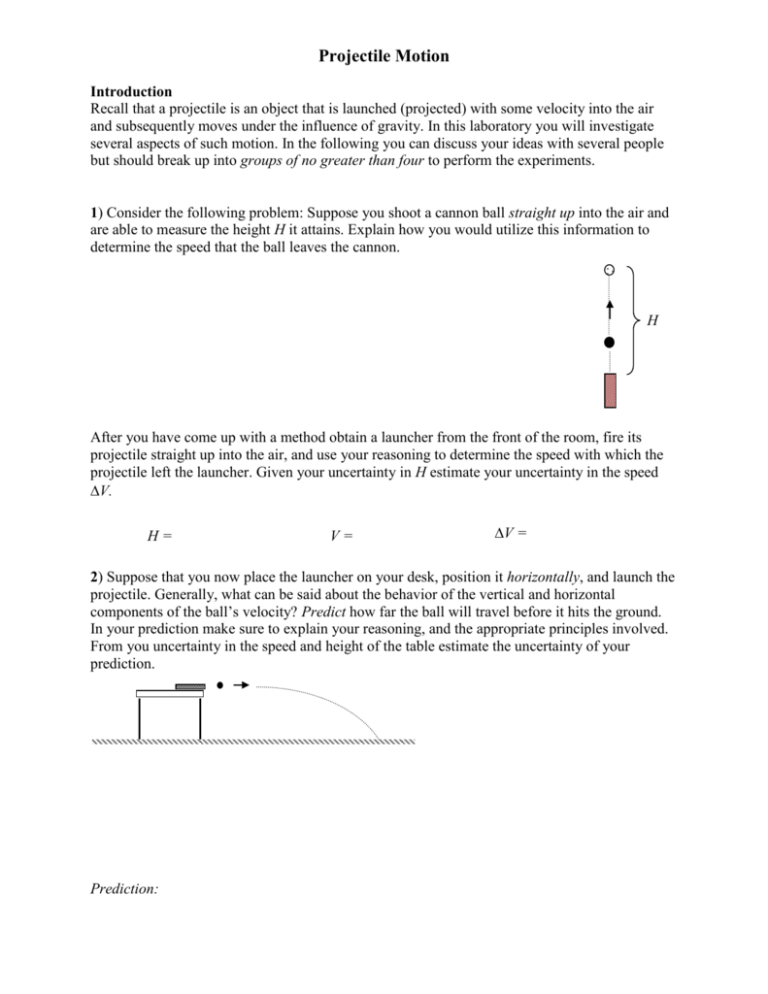
Projectile Motion Introduction Recall that a projectile is an object that is launched (projected) with some velocity into the air and subsequently moves under the influence of gravity. In this laboratory you will investigate several aspects of such motion. In the following you can discuss your ideas with several people but should break up into groups of no greater than four to perform the experiments. 1) Consider the following problem: Suppose you shoot a cannon ball straight up into the air and are able to measure the height H it attains. Explain how you would utilize this information to determine the speed that the ball leaves the cannon. H After you have come up with a method obtain a launcher from the front of the room, fire its projectile straight up into the air, and use your reasoning to determine the speed with which the projectile left the launcher. Given your uncertainty in H estimate your uncertainty in the speed V. H= V= V = 2) Suppose that you now place the launcher on your desk, position it horizontally, and launch the projectile. Generally, what can be said about the behavior of the vertical and horizontal components of the ball’s velocity? Predict how far the ball will travel before it hits the ground. In your prediction make sure to explain your reasoning, and the appropriate principles involved. From you uncertainty in the speed and height of the table estimate the uncertainty of your prediction. Prediction: Now test your prediction by firing the ball and determining the horizontal distance it travels from the launcher when it hits the ground. Compare your prediction to your observations. Is the discrepancy within your predicted uncertainty? If not can you offer any explanation? Observation: Percent error: Comments: 3) Suppose the launcher is placed on the floor, aimed at a 45 angle with the horizontal, and then fired. Explain how such a situation can be analyzed and attempt making a prediction for how far and high the projectile travels. Also estimate the uncertainties in your predictions. 45 Predictions: Horizontal range = Maximum height = Test your prediction by firing the ball several times and determining its maximum height and distance it lands from the launcher. Are your observations within your uncertainties? Observations: Max height = Range = Percent errors: Max height: Range: Comments: 4) With the launcher again placed on the floor determine the range of the projectile for the following angles (above the horizontal): 15, 25, 35, 45, 55, 65, 75. For which of these angles does it travel the farthest? Do any of the angles yield roughly the same range? Can you roughly explain why this is so? R15 = R25= R35= R55= R65= R75= R45= Comments: 5) Now place the launcher on the table and determine the angle that yields the greatest range. Is it identical to what you found in (4)? If it is different can you offer a qualitative explanation as to why it is smaller or greater than the result you found in part (4)? Max range angle = Comments: 6) Can you prove the result corresponding to your finding in part (4)? 7) Attempt to derive a general formula for the maximum range angle found in (5).
